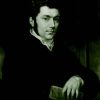Hurtle Square is one of the principal squares in the central business district of Adelaide. It is named after James Hurtle Fisher, the first Resident Commissioner and arguably the most politically powerful man in the colony at the time of settlement.
Because of the authority vested in the South Australian Colonization Commission and its commissioners by an Act of Parliament, Fisher rightly believed he had powers equal to and even beyond those of Governor John Hindmarsh.
By the time the pair had disembarked from the HMS Buffalo at Holdfast Bay in 1836, they were already archenemies. Inadvertently, the parliament had authorised a degree of autonomy vested in the South Australian Colonization Commission, which led to the unfortunate and now notorious dilemma of dual government.
This was not resolved until Hindmarsh was recalled in mid-1838. Both he and Fisher were on the Street Naming Committee. In fact, because of the wrangle between Fisher and Hindmarsh as to who had the power to name streets and places in the colony, it was Fisher’s idea to break the deadlock by forming a committee to undertake the naming process. This occurred on 23 May 1837, just five months after settlement and only weeks after the sale of the town lots.
James Hurtle Fisher was born on 1 May 1790 in Sunbury, Middlesex. Both he and Lord Russell went to a privately run school in Sunbury. This in part explains why Fisher was later to call upon Lord Russell to exonerate him from accusations of financial mismanagement in the first days of the colony.
Just why Fisher wanted ‘his square’ to be called Hurtle Square remains a mystery. Presumably it was a family name that somehow became incorporated with the name Fisher. Another possible reason may have been the embarrassment and stigma he was suffering following his bankruptcy in early 1835. The precise details of his bankruptcy remain a mystery, but the fact it was so widely publicised in so many papers explains why he began to look further afield for opportunities. At first he wrote to Lord Brougham hoping to secure a position as an assistant commissioner of the new Poor Law Commission (established 1 October 1834), which came into being as a result of the Poor Law Reform Bill. Unfortunately, he was not successful.
Fisher was described as a ‘scrivener’, a legal profession normally incorporating roles of a copyist, drafter of documents, notary, broker and moneylender. Prior to coming to South Australia he had been a barrister and estate broker for nearly thirty years. His knowledge of real estate law and conveyancing, in particular, was impressive and goes some of the way to explain why he suddenly appeared at the Adelphi looking for employment in the colony. With a sizeable family of teenagers he was in urgent need of certainty in his life and a sustainable income.
On 5 October 1813 Fisher married Elizabeth Johnson, probably at St George’s in Hanover Square. Between then and leaving for the new colony on the Buffalo the couple lived in Fisher’s abode in Little Maddox Street. Fisher was a practising solicitor in London by 1816 and had settled down to have a family of nine children: six boys and three girls. Elizabeth Hurtle Fisher was the eldest. She was born 4 April 1815. On her arrival in the colony she married John Morphett, of Morphett Street fame, at Holy Trinity Church in 1838.
James Hurtle Fisher would have been well connected as Secretary to the Association for the Relief and Employment of the Poor, given the subscription list of highly influential members to this organisation. As a young, married man with a growing family he balanced his time between conveyancing, private investment, parenthood and philanthropy. For more than ten years from 1818 onward he was Honorary Secretary to the governors of an organisation known as St George’s and St James’s Dispensary. The privately funded charity administered medical, pharmaceutical and homeopathic help to the distressed and underprivileged under the patronage of the Anglican Church.
It is obvious that Fisher was totally in agreement with the radical thrust of the colonising project. It would, however, be disingenuous not to acknowledge that he was also driven by a degree of financial urgency and like so many others a streak of opportunism.
By September 1835, about nine months after being publicly declared bankrupt, Fisher was working on the South Australian Building Committee, a subcommittee of the South Australian Colonization Commission. George Fife Angas was much later (in 1851) to remind a group of ‘old colonists’ in Adelaide that when Fisher’s application for appointment came before the South Australian Colonization Commission, where he was a member, he ‘came so well recommended that they felt convinced he was the best man in England to be entrusted with the important duties of Resident Commissioner for the sale of land in South Australia’.
By December 1836 Colonel Robert Torrens and the commissioners decided to appoint Fisher as both Resident Commissioner and Registrar General. Fisher’s commission formally began on 14 July 1836.
In anticipation of an appointment Fisher began to write a short volume in which he teases out three important functions likely to be the responsibility of the Registrar General in the proposed colony. The three Acts were: (a) An Act for establishing a General Register of Titles, (b) An Act for Registering Births Deaths and Marriages, and (c) An Act to facilitate the Transfer of Property by Deed.
There seems little doubt that this seminal and extremely rare publication, which Torrens and the commissioners published in 1836, ensured that Fisher was awarded perhaps the most important appointment in the colony as Resident Commissioner and Registrar General. The document was written expressly for the commissioners and Fisher rather cleverly and somewhat pointedly wrote himself into the text. Essentially, it was a prescription to simplify the transfer of title deed on sale of landed property in a new jurisdiction where it was presumed that all the land was ‘waste land’ held by the Crown.
The importance of the document cannot be overstated because it formed the basis of the Torrens Title System of Land Registration, which was later introduced to the first elected House of the South Australian Parliament by Colonel Torrens’s son, Sir Richard Robert Torrens, in 1857–58 and which has now become world renowned. Had it been written without any reference to the first person, it might have been adopted more readily.
To write himself into the document was a grave mistake and gives the impression Fisher viewed it as a job application where he could impress the commissioners with his legal knowledge about land transfer, title deed and both personal and property registration. None of these three Acts was passed into law by the first Legislative Council in the colony.
Among those who have a working knowledge of James Hurtle Fisher and his contribution to the history of South Australia, the conventional wisdom is that he was a wily, shrewd, nitpicking attorney who, after losing his role as Resident Commissioner, slowly but surely and with tenacity and persistence, rose to be acclaimed in South Australia with a knighthood. He was a clever man, but in the eyes of both Hindmarsh and Jeffcott he was not what they regarded as personable.
Indeed, he may have been a little aloof to some.
By contrast, and many years later, after a long and successful life in South Australia, Sir James Fisher was described differently: in 1905, the Lieutenant Governor of South Australia called him a ‘ fine old English Gentleman’.
When Governor George Gawler was appointed to replace Governor Hindmarsh, the commissioners and the Colonial Office in London joined the role of Resident Commissioner to that of Governor, which effectively made Fisher unemployed. He was disappointed and continued to argue unsuccessfully that his appointment
had been for life. Eventually he retreated to private life and began practising law in the colony.
However, he was not without influence. Fisher was elected twice by the citizens of Adelaide as Lord Mayor, firstly in 1840 and then again between 1852 and 1854. With councillors and aldermen they formed what was known as the Corporation of the City of Adelaide. Municipal councils, as they were regarded, were first established in Britain in 1835. Adelaide was the first such council in the whole of the British Empire.
Fisher’s career was impressive and he was ‘elected a member of the Legislative Council in 1853, became Speaker in 1855–56 and President from 1857 to 1865 when he retired from politics’.
In other walks of life he was a member of the inaugural South Australian Club, a magistrate, a freemason, a prominent owner of thoroughbred racehorses and a trustee of Holy Trinity Anglican Church on North Terrace, where there is a plaque to his memory. He laid the foundation stone to the first memorial to Colonel Light, erected in Light Square in 1843 and was a founder of the collegiate School of St Peter.
He made his living by the law throughout this time and quickly rose to be the Chairman of the Bench of Magistrates and the nominal leader at the South Australian Bar.
With such prominent and distinguished service, and as if to vindicate his earlier position in the face of significant criticism, he became the first resident of South Australia to be dubbed a Knight Bachelor by Queen Victoria.
By the time of his death on 28 January 1875, Sir James Hurtle Fisher had scaled to the heights of respectability and conservatism in Adelaide. His remains were interred in the family vault at Adelaide’s West Terrace Cemetery on Monday afternoon, 2 February. All government and corporation offices in Adelaide were closed for the afternoon as were the offices of the legal profession in Victoria Square. Several hundred colonists who had gathered outside the Fisher family home followed Fisher’s hearse slowly to the church.







Comments